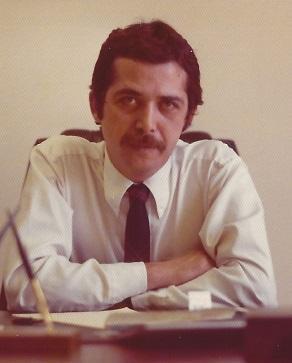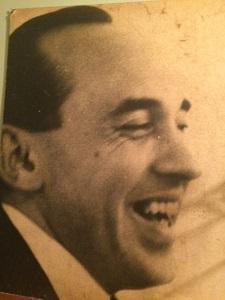The anatomy of a forgotten Armenian assassination
HALUK ŞAHİN

Forty-three years ago on Jan. 27, 1973, two Turkish diplomats were assassinated by an elderly Santa Barbara resident of Armenian origin by the name of Gourgen Yanikian in a cottage at what was then the Biltmore Hotel.
Nowadays, few people remember it and those who do are probably unaware of the fact that this local crime turned out to be one of the most significant assassinations of the 20th century. It signaled the beginning of a wave of terrorist attacks against Turkish targets lasting almost 20 years and caused at least 90 deaths and hundreds of injuries around the world, including the United States.
Mr. Yanikian, in a letter sent to a number of newspapers including the Santa Barbara News-Press just before the murders, had called for just such an outcome. He requested “Armenian individuals” everywhere to start a war against Turkish diplomats and officials.
One of the two murdered diplomats at the Biltmore, Bahadır Demir, was a friend of mine. He was only 30 years old, on his first diplomatic duty as vice consul of the Turkish Consulate in Los Angeles.
The double murder of Bahadır and his superior, Consul General Mehmet Baydar, was a big shock to the people of Turkey. Most people could not understand how such a thing could have happened in 1973. Why would a 77-year-old man kill a young man for events that happened many years before he was born?


Bahadır Demir (L) and Consul General Mehmet Baydar
At the time of the assassinations, 50 years after Atatürk’s 1923 founding of the modern Republic of Turkey from the remnants of the former Ottoman Empire, there was little or no ill-feeling or hatred toward Armenians in Turkey. The new republic rejected many of the Ottomans’ institutions and grudges and desired to start anew without the burdens and hatreds of the past.
The double assassination at the Biltmore and the ensuing campaign of terror changed all of that. Long-forgotten animosities and fears were revived. The hopes of reconciliation between the two sides were set back by at least several decades as a fog of hatred descended.
When I learned about the murder of my friend 43 years ago, little did I know that the bullet that killed him would continue its deadly journey until it struck another friend of mine 34 years later in Istanbul: my Turkish-Armenian colleague Hrant Dink was assassinated on Jan. 19, 2007, by Turkish nationalist extremists.
The Yanikian case was tried here at the magnificent Santa Barbara County Courthouse in June and July of 1973 and attracted a great deal of national and international attention. Yanikian had lured the two diplomats to Biltmore after months of preparations by promising to give them a painting and a banknote belonging to the Turkish government. He wrote in the letter/manifesto that his goal was to call attention to the massacres of Armenians in the waning years of the Ottoman Empire.
According to Yanikian, violence was his only resort. Because the two Turkish guests from Los Angeles were representatives of the Turkish government, they were not human beings to Yanikian but “symbols of evil,” whom he had a right to destroy.
Hrant’s killers 37 years later also saw him as a symbol of betrayal as a consequence of what transpired after Yanikian’s violent acts rather than a decent and courageous human being struggling for peace.
Mr. Yanikian was sentenced to life in prison and spent 11 years in a minimum security prison, idolized and almost canonized by some members of the Armenian community as a hero. He was paroled by California Gov. George Deukmejian in 1984 on account of poor health and died a short while later as a proud and accomplished man.
Yet, the FBI files released recently tell a different story. Gourgen Yanikian was not the man he pretended to be: a prosperous man of culture. In fact, he had been tried for child molestation here in Santa Barbara, had only 12 dollars in his bank account, and had been on welfare for some years.
The most striking revelation of all was the fact that much of his personal story was of a dubious nature, if not downright fabricated. Informants told FBI agents that he was shunned by the Armenian community here as an untrustworthy character. They were particularly surprised by the cause he espoused, for he had shown no interest in the affairs of American Armenians or historical tragedies that befell Ottoman Armenians.
In fact, many people in Santa Barbara told FBI agents that they knew him as a restless and vainglorious man seeking for himself a place in, not only society, but also history. He was an impostor in search of a last minute of glory.
If the tragically shortened lives of my friends Bahadır and Hrant mean anything, we must not allow ourselves to be blinded and misdirected by the fog of hatred. We must have the courage to stand against those who continue to sow hate and discord between us for their own benefit.
*Haluk Şahin is Prof. emeritus of Communicatons at Istanbul Bilgi University. A veteran journalist, his book on the 1973 murders in Santa Barbara will be published in Istanbul next month.
 Forty-three years ago on Jan. 27, 1973, two Turkish diplomats were assassinated by an elderly Santa Barbara resident of Armenian origin by the name of Gourgen Yanikian in a cottage at what was then the Biltmore Hotel.
Forty-three years ago on Jan. 27, 1973, two Turkish diplomats were assassinated by an elderly Santa Barbara resident of Armenian origin by the name of Gourgen Yanikian in a cottage at what was then the Biltmore Hotel. 
